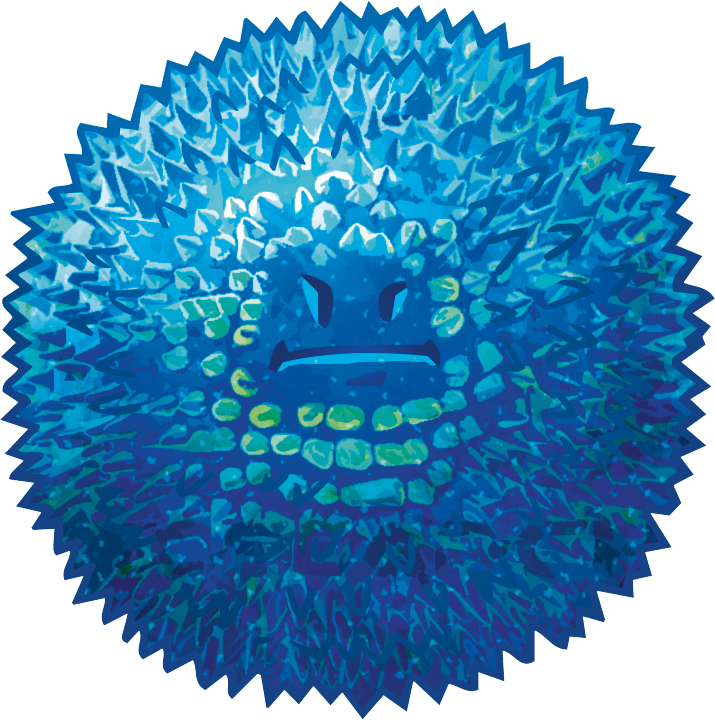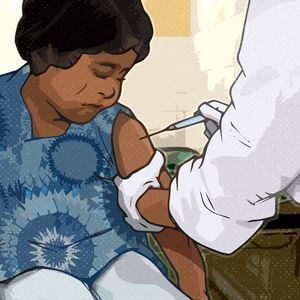Rubella virus (Rubivirus)
Rubella virus

Rubivirus is the virus that causes rubella. Rubiviruses are part of the matonaviridae family, a family very close to togaviruses. These are RNA viruses enveloped with a capsid1 of icosahedral2 symmetry. Their virions are small, around 60 nm.
The name of the disease comes from the Latin word “rubella”, which means red. This disease occurs mainly in children, who usually present with skin erythema3 (flat reddish macular skin lesions. Until 1968, this disease was not differentiated from measles.
The manifestations in children are mild and the importance of rubella is linked to the risk of malformations when congenital4 infections occur. Thus, during infection of the fetus during pregnancy, 80% of newborns with congenital rubella will either have malformations (heart disease5, deafness, microcephaly6, etc.), or as a result a progressive infection in infants or small children.

Soon eradicated?
Transmission usually occurs from person to person by droplets and aerosols. Rubella is extremely contagious with a reproduction rate7 (effective R) of the order of 9. By comparison that of influenza is of the order of 1.5 to 2 and that of measles from 9 to 15. In the In most countries of the world vaccination has stopped the transmission of rubella (and also measles).
With the eradication of smallpox and the near total eradication of polio globally, vaccination against rubella and measles is among the great successes of WHO campaigns. Being a strictly human infection (no animal reservoir) and in view of the success of vaccination in the Americas which has enabled rubella eradication on these continents (South America, Central and North America), vaccination could allow the eradication of this disease worldwide.
- Black cards
- Akkermancia muciniphila
- Aspergillus fumigatus
- Bifidobacterium
- Candida albicans
- Chlamydia trachomatis
- Clostrioides difficile
- HBV
- HPV
- Human immunodeficiency virus
- Klebsiella pneumoniae
- Lactobacille
- Leishmania
- Leptospira interrogans
- Neisseria meningitidis
- Mumps virus
- Streptococcus pneumoniae
- Rickettsia prowazekii
- Measles virus
- Rubella
- Toxoplasma gondii
- Treponema palidum
- Chickenpox virus
- Vibrio cholera
- Zikavirus
